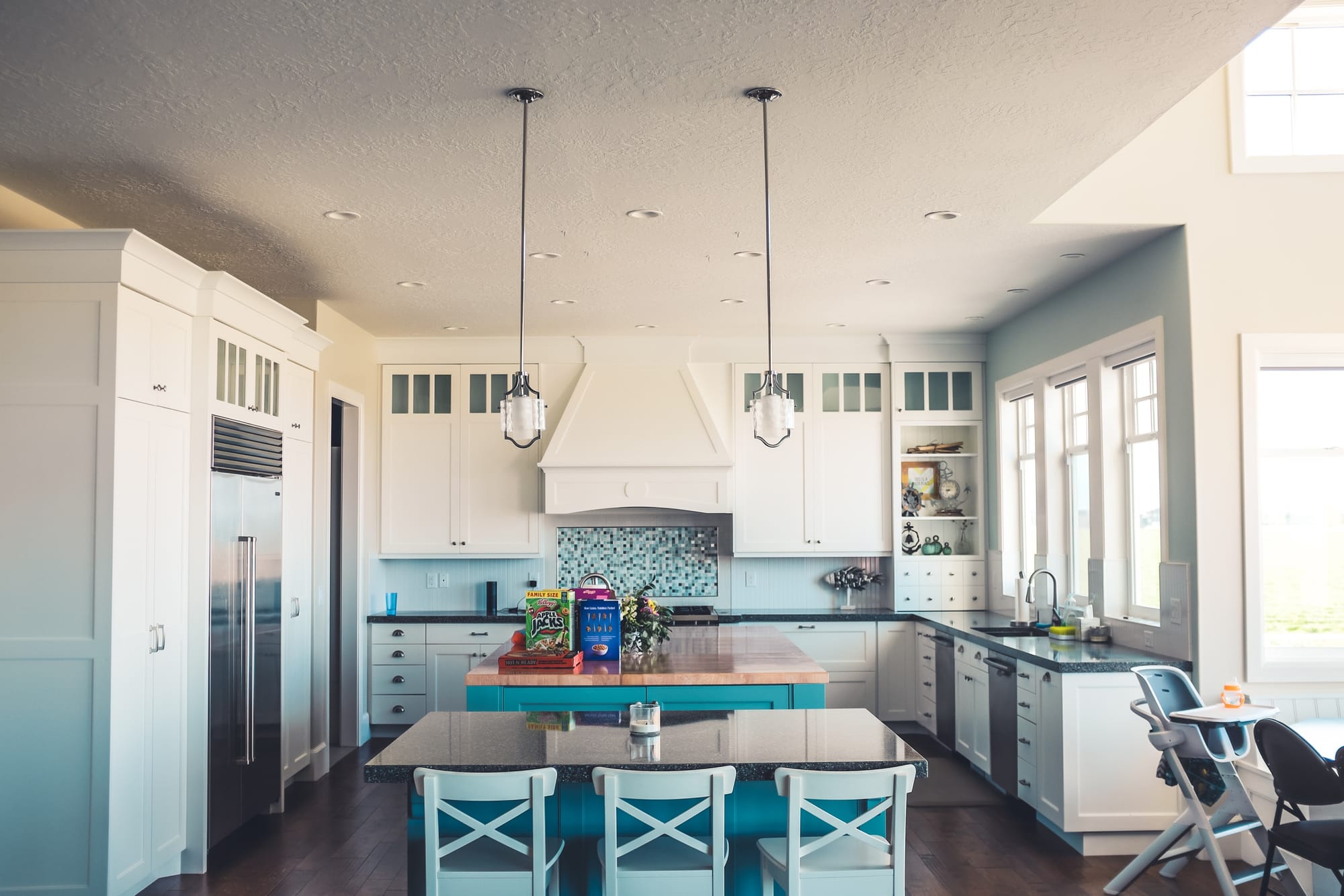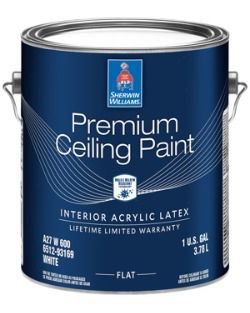Can You Use Ceiling Paint as Primer? Here’s How

Key Features
- Versatile Use in Certain Situations: Ceiling paint can be used as a primer in specific cases, such as repainting similar colors or when the surface is in good condition.
- Cost-Effective for Small Projects: Using leftover ceiling paint as a primer can save money and avoid a trip to the store for small or low-risk projects.
- Lack of Stain-Blocking: Ceiling paint doesn’t offer the same stain-blocking or bonding performance as traditional primers, which can compromise the topcoat’s durability.
The Paint Primer Dilemma
Why This Question Comes Up
It’s a common scenario: you’re about to start a painting project, and you look around to see what supplies you already have. You notice a can of leftover ceiling paint and wonder, Can I use ceiling paint as primer to save money and time? This question comes up often because using ceiling paint seems like an efficient solution, especially if you’re working on a budget. But is it really a good idea?
This dilemma sets the stage for an important discussion on whether ceiling paint can effectively substitute for a dedicated primer. To make an informed decision, it's essential to weigh the pros, cons, and best practices for both ceiling paint and primer, considering the surface you’ll be painting and the results you want to achieve.
What Is Ceiling Paint and What Is Primer?
Understanding Ceiling Paint
Ceiling paint is formulated differently than wall paints, primarily because of its specific role. It’s known for its thicker consistency and matte finish, which helps hide imperfections and creates a uniform surface. Its formulation is also designed to minimize drips, an important factor when painting overhead. Ceiling paint is usually a bright white to reflect light and make the space feel more open.
However, using ceiling paint as a primer can be tricky because it wasn’t designed to serve as a bonding layer for other paints. Its primary purpose is to cover ceiling imperfections, not to seal a surface or improve adhesion.
The Role of Primer in Painting
Primers, on the other hand, play a much more critical role in preparing surfaces for paint. A primer seals the surface, helping the topcoat adhere better and ensuring an even finish. Whether you're dealing with drywall, wood, or a previously painted surface, primers create a protective layer that allows the topcoat to bond properly.There are different types of primers for different needs:
- Stain-blocking primers prevent stains from bleeding through the topcoat, especially in areas prone to moisture or heavy use.
- Bonding primers are great for slick or glossy surfaces, improving paint adhesion.
- Multi-purpose primers offer versatility for general use, providing good adhesion and stain blocking in most situations.
While ceiling paint may cover imperfections, it doesn't offer the same sealing and adhesion properties as a dedicated primer, making it less effective in preparing surfaces for a lasting finish.
Things to Know
- Ceiling paint can be used as a primer in certain situations but lacks the bonding and stain-blocking capabilities of dedicated primers.
- Always prepare the surface properly, regardless of whether you’re using ceiling paint or a traditional primer.
- For challenging surfaces like new drywall or wood, stick with a dedicated primer for the best results.
- Test a small area before committing to using ceiling paint as a primer for the entire project.
Can You Really Use Ceiling Paint as Primer?
The Short Answer
Keyword: use ceiling paint as primer
When it comes to using ceiling paint as primer, the answer is both yes and no. While you can use ceiling paint as a primer in some cases, it’s not always the best option. Ceiling paint is thicker than standard wall paint and can help with coverage, but it lacks the specific bonding agents and properties found in dedicated primers. As a result, using ceiling paint as a primer works best when painting over a surface that’s already in good condition, or if you’re working with a very similar color and trying to save a bit of money.
In scenarios where you’re dealing with new drywall, wood, or surfaces that are prone to stains or moisture, ceiling paint may not provide the sealing or adhesion benefits you need for a lasting finish.
When It Works and When It Doesn’t
Keyword: use ceiling paint as primer
Using ceiling paint as a primer can work in limited scenarios, such as when you’re repainting a ceiling or touching up walls where the surface is already clean, smooth, and in good condition. Because ceiling paint is formulated to hide imperfections and create a uniform surface, it can substitute as a primer if you’re just changing the color slightly or covering a similar hue.
However, it’s not recommended for use on new drywall, wood, or high-traffic areas that are exposed to moisture or prone to stains. These types of surfaces typically require a dedicated primer, which is designed to seal the surface and provide strong adhesion for the topcoat. Without these benefits, ceiling paint may lead to peeling, poor coverage, or stains bleeding through your topcoat over time.
The Pros and Cons of Using Ceiling Paint as Primer
Pros: Cost-Effective and Convenient
Keyword: use ceiling paint as primer
One of the main advantages of using ceiling paint as primer is that it’s cost-effective, especially if you have leftover ceiling paint from a previous project. It allows you to avoid the cost of purchasing a separate primer, particularly if you’re working on a smaller project or doing touch-ups. For budget-conscious homeowners or DIYers, it can save both time and money, while also helping you reduce waste by using what you already have on hand.
Additionally, if the surface you’re painting is in good condition and doesn’t require a lot of prep work, using ceiling paint may be a convenient shortcut—saving you a trip to the store.
Cons: Compromised Performance
Keyword: use ceiling paint as primer
On the downside, ceiling paint lacks the bonding agents that are specifically designed to help primer adhere to different surfaces. This means it may not create the same strong foundation for your topcoat, potentially leading to poor adhesion or an uneven finish. Without proper bonding, the paint might peel or wear down more quickly, especially in high-traffic areas or on tricky surfaces like new drywall or wood.
Moreover, ceiling paint isn’t designed to block stains or prevent color bleed-through, which means you could end up with visible imperfections or a topcoat that doesn’t look as smooth as you’d hoped. If your goal is long-term durability, investing in a dedicated primer is typically the better choice.

How to Use Ceiling Paint as Primer Effectively
Surface Preparation Is Key
Whether you’re using ceiling paint as primer or sticking with a traditional primer, surface preparation is the most crucial step to ensure a smooth, durable finish. Before applying any paint, you’ll need to clean the surface thoroughly to remove dirt, grease, and debris that can interfere with adhesion. Sanding down rough areas or peeling paint is also necessary to create a smooth canvas. Repair any cracks or imperfections by filling them with putty or spackle, then sand the area until it's even with the rest of the surface.
Proper surface prep ensures that the paint—whether it’s ceiling paint or a dedicated primer—will adhere properly and last longer. Skipping this step could result in peeling, poor coverage, or uneven finishes, making your project more of a headache down the road.
Application Tips
Applying ceiling paint as primer requires attention to detail to achieve the best results. Start by selecting the right tools: a quality brush or roller suited for the surface you’re painting will help you achieve even coverage. For smoother surfaces, use a low-nap roller, while rougher textures like stucco may require a thicker nap to cover properly.
Apply the ceiling paint in thin, even coats, and allow each coat to dry thoroughly before adding another layer. This will ensure the paint bonds properly and provides a solid base for your topcoat. A helpful tip is to test a small area first to see how well the ceiling paint adheres and covers the surface. If it passes the test, proceed with the rest of the project confidently.
Follow Up with a Quality Topcoat
Once you’ve applied ceiling paint as primer, it’s essential to follow up with a high-quality topcoat to achieve a durable and vibrant finish. Ceiling paint may not provide the complete coverage or bonding strength that a traditional primer offers, so using a premium topcoat is key to ensuring the final product looks professional and lasts.
In some cases, you may need to apply multiple topcoats if the ceiling paint doesn’t provide adequate coverage on its own. Be sure to choose a topcoat that’s suitable for the surface and the conditions the room will experience—high-humidity areas like bathrooms, for example, may require moisture-resistant paint.
Alternative Solutions: When to Stick with Traditional Primer
Specialty Projects
While ceiling paint may work as a primer in certain situations, there are specific projects where sticking with a traditional primer is the better choice. For example, bare wood, metal, or surfaces in high-humidity areas like bathrooms or kitchens demand specialized primers that offer stain-blocking or moisture resistance. These primers are designed to prevent peeling, mold growth, and stains from bleeding through the paint, which ceiling paint simply cannot handle.
Using a dedicated primer for these specialty projects will save you time and effort in the long run, as it creates a better foundation for your topcoat and protects your surfaces more effectively.
Primer Alternatives
If you’re looking for alternatives to both ceiling paint and traditional primer, consider paint-and-primer-in-one products. These hybrid paints combine primer and paint into a single product, saving you time and eliminating the need for two separate applications. However, these products are not always a one-size-fits-all solution, and may not perform as well as using a dedicated primer and topcoat for certain surfaces.
Depending on the scope of your project, paint-and-primer-in-one can be a convenient option for small, low-risk jobs. But for larger projects, challenging surfaces, or areas exposed to high wear, traditional primer followed by a quality topcoat will yield the best long-term results.
In Our Experience
"While using ceiling paint as a primer might work for certain low-risk projects, it’s not always the best choice for surfaces that need strong adhesion or stain blocking. If you're on a tight budget or using leftover paint, it could be a short-term solution, but dedicated primers generally provide better results for long-lasting, durable finishes."
Weighing the Risks and Benefits
Recapping the main points, using ceiling paint as a primer can be a practical choice in certain low-risk scenarios, but it’s not always ideal. For projects where strong adhesion, stain-blocking, or moisture resistance is critical, a dedicated primer is usually the better option. Ceiling paint may provide some savings and convenience, but it lacks the specialized properties that primers offer, which can affect the long-term durability and quality of your final paint job.
Before deciding whether to use ceiling paint as a primer, take a step back and evaluate your project needs. Is the surface in good condition, or does it require more bonding strength and stain resistance? What’s the climate or environmental exposure the painted surface will face? Answering these questions can help you make an informed decision that balances cost, performance, and results.
Lastly, I encourage you to share your own experiences or ask any questions in the comments below. Let’s start a community discussion and help each other with tips and insights!
Do You Have Questions? Give Us A Call With Any & All! 503-389-5758
-
People Also Ask:
Can ceiling paint be used as a primer?
Yes, ceiling paint can be used as a primer in some cases, but it’s not ideal for all surfaces. While it can save time and money, it lacks the bonding and stain-blocking capabilities of dedicated primers.
What is the difference between ceiling paint and primer?
Ceiling paint is formulated to cover imperfections with a thick, matte finish, while primers are designed to seal surfaces, improve paint adhesion, and block stains.
When should you not use ceiling paint as a primer?
Ceiling paint is not recommended as a primer for new drywall, wood, or surfaces prone to stains or moisture. A dedicated primer is better suited for those applications.
-
SUBSCRIBE TO OUR BLOG: Stay informed with the latest in Painting and DIY projects by subscribing to Lightmen Painting. Get insights, tips, and more delivered straight to your inbox. We would also love to know what you would like to read about, leave thoughts on where we should go next. Interests, Topics, Ideas, all are welcome.
If your in the Portland, Or. area and need advice or a free no obligation estimate call us at 503-389-5758 or email scheduling@lightmenpainting.com
Thanks for stopping by Lightmen Daily! Stay tuned for more practical tips and expert advice on making your painting projects flawless, from wall to floor!
Definitions
- Ceiling Paint: A type of paint designed for ceilings, known for its thick consistency and matte finish, often used to hide imperfections and prevent drips.
- Primer: A preparatory coating applied to surfaces before painting to improve adhesion, block stains, and create a smooth base for topcoats.
- Bonding Agents: Chemicals in primers that help the paint adhere better to various surfaces, such as wood, drywall, or metal.
- Stain-Blocking: The ability of a primer to prevent stains or previous colors from bleeding through the topcoat.
- Paint-and-Primer-in-One: A hybrid product that combines primer and paint, designed for convenience but not always suitable for all surfaces.
- Surface Preparation: The process of cleaning, sanding, and repairing a surface before painting to ensure a smooth, long-lasting finish.
- Topcoat: The final layer of paint applied to a surface, providing color and protection.
- VOC (Volatile Organic Compounds): Chemicals found in some paints and primers that can affect indoor air quality; low-VOC options are recommended for healthier environments.
- Testing Area: A small section of the surface where paint or primer is tested before full application to ensure proper adhesion and finish.
- Multi-Purpose Primer: A versatile primer suitable for a wide range of surfaces and conditions, including stain-blocking and bonding properties.
Lightmen Painting Serving: Portland, Tigard, Lake Oswego, Tualatin, West Linn, Milwaukie, Sherwood, Happy Valley, Oregon City, Beaverton, Hillsboro, Gresham -Trade Partners-

